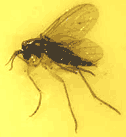
What bugs you more?
Rude phone calls during dinner or rude plant pests?
Hosted by Marion Owen, Fearless Weeder for PlanTea, Inc. and
Co-author of Chicken Soup for the Gardener's Soul
FEATURE ARTICLE:

Tom Hanks' "Power of Four" solution
More good stuff:
Who is Marion Owen?
FAQs about PlanTea
Search Marion's articles, tips and recipes
Why grow organic?
News and press releases
Read love letters
How to link to this site
Need a speaker?
How to contact Marion
Visiting Alaska?
Come to Kodiak Island!
Go to home page

Marion's UpBeet Gardener
Newsletter has been
replaced by Marion's blog
which you can find at:
www.marionowen.wordpress.com
 There's nothing more irritating than having a telemarketer call you while you're eating dinner. It's one of the main reasons why so many people have signed up on the National Do Not Call List.
There's nothing more irritating than having a telemarketer call you while you're eating dinner. It's one of the main reasons why so many people have signed up on the National Do Not Call List.
There's another pest that can be just as irritating while you're trying to eat. I'll give you a few hints: It's the size of coarse ground pepper and eats like a pig. It has wings, sometimes, and it rudely buzzes around your fork while you're trying to take a bite.
This little pest, is none other than the fungus gnat. Not a very pretty name, but it's perfect, since they live and graze, quite contentedly, in the soil of potted, indoor plants. The flying insects, the critters you're most likely to meet, are the adult and final stage of a 3-week life cycle. It goes something like this:
The winged adults live for 7 to 10 days. Then they lay eggs in the soil. In 4 to 6 days, the larvae hatch. Now this is where the damage takes place: These little larvae worms are hungry, so they feed on fungus and roots for 12 to 14 days. The larvae pupate (hang out in the soil) for 5 to 6 days and emerge as adults. The cycle starts all over again.

Close up of a fungus gnat (actual size: the tip of a pencil) on a yellow sticky trap, which are available through Marion's online store.
In the larval stage, these maggots actually nibble on the small root hairs and eat decaying organic material in the soil. I know that sounds creepy, but it's mother nature at work. As a rule, fungus gnats are more of a nuisance than trouble, though if left to their own devices (breeding-wise), they can eventually topple a plant.
If you suspect your plants are harboring fungus gnats, push a potato half, cut side down, part way into the soil. If larvae are present, in a few days, some will rise to the potato and tunnel up inside it. If your test is positive for gnats, you have several defense tactics from which to choose. First, you can make life miserable for them by letting the soil dry out between waterings. Since fungus gnats thrive on damp, decaying matter, a parched desert is not where they want to raise their kids.
A soap and water spray also works. To mix your own, add one tablespoon of liquid soap to one gallon of water. Use a soap brand that claims to be a pure soap, rather than one that contains a lot of additives. TIP: Hand and body soaps tend to be safer for plants.
Your best defense is to be a cautious plant person. Many houseplant insect problems are introduced by infested plants. Even well-intentioned gift plants. So carefully check plants before purchasing and quarantine any new plants in a separate area for a few weeks to avoid introducing new pest problems.
TWO FAVORITE BOOKS on indoor gardening:
1. Houseplants for Dummies, by Larry Hodgson
2. Rodale's Encyclopedia for Indoor Gardening
 Perhaps the best anti-gnat solution is to set a yellow sticky trap right on the soil. It looks like a yellow 3x5-inch card and is available through my online store)
Perhaps the best anti-gnat solution is to set a yellow sticky trap right on the soil. It looks like a yellow 3x5-inch card and is available through my online store)
In a few days, you can start counting the casualties. Because sticky traps are so effective, I suggest removing the sticky trap from sight if you have guests coming over for dinner.
Speaking of dinner, I hope your dinners are not interrupted by telemarketers. If they are, put your fork down and go to the National Do Not Call Registry at donotcall.gov. You can register your home phone or cell phone for free.
Thanks for visiting! You might also enjoy looking through my indoor gardening tips. Cheers to you!
![]()
Other articles of interest:
Spider Mites--Ackkk! What they are and how to get rid of them
How to Re-Pot Tired Houseplants: Without the fuss!
Aquarium Water and Coffee Grounds: Houseplant food comes in many forms!
Thanks for visiting and please stop by again. I'll put the coffee on!
Meet Marion Owen /// Learn about PlanTea /// Online Catalog /// Articles, Tips, Recipes /// Get free UpBeet Gardener newsletter /// Read current issue /// Listen to radio show /// Read news and press releases /// More resources and links /// Learn why 'grow organic?' /// View guidelines for retailers /// Read love letters /// Book Marion as a speaker /// Site map /// How to link to us /// Contact us /// Go to home page
PlanTea: The organic plant food in tea bags. http://www.plantea.com
Copyright ©1996 to present: PlanTea, Inc. All Rights Reserved. PO Box 1980, Kodiak, AK 99615-1980 USA
Questions or comments? marion@plantea.com Phone: Toll Free: 1-800-253-6331 (US and Canada); 907-486-2500